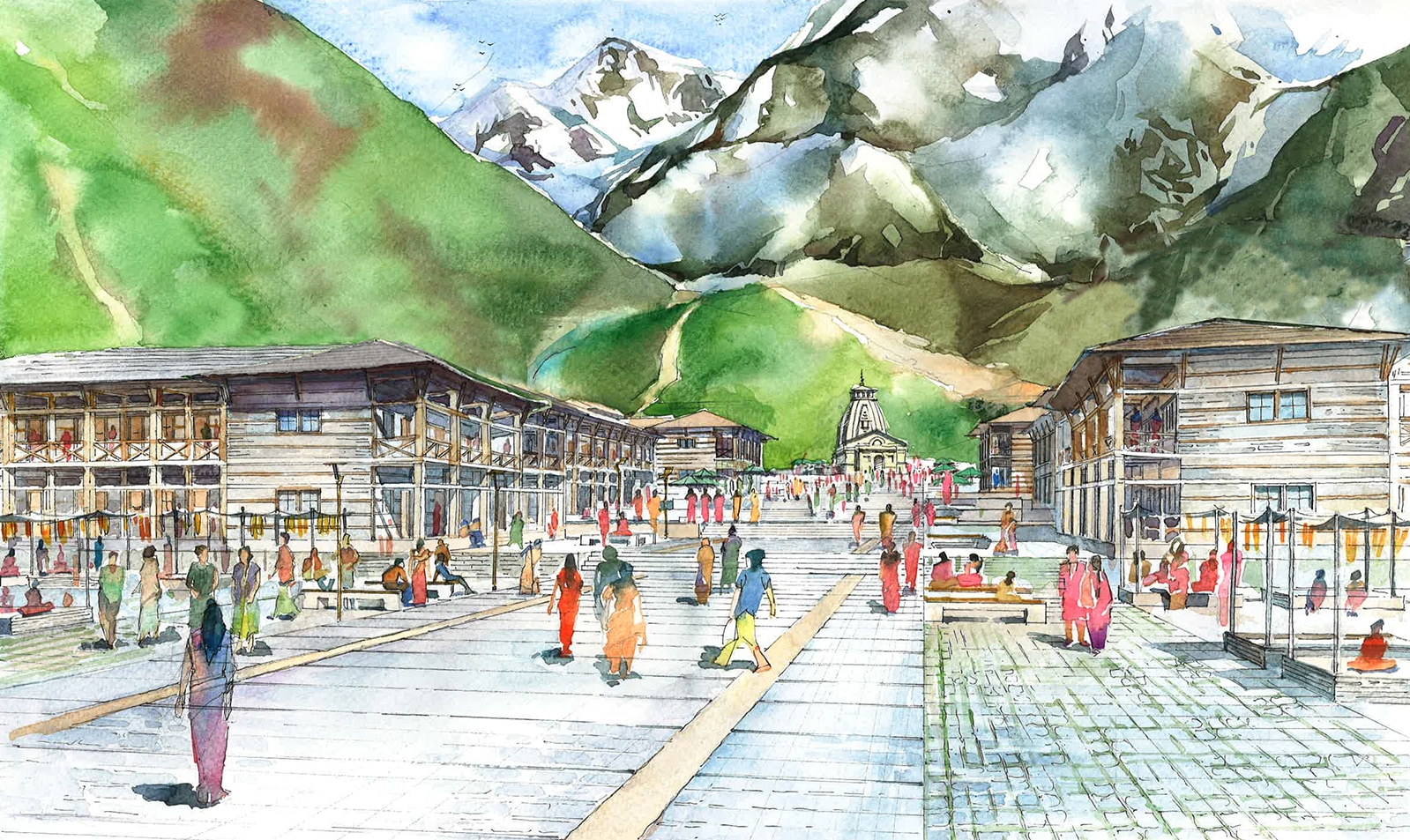
Kedarnath Redevelopment
Kedarnath , Uttrakhand, India
The design proposes a redevelopment plan for the Kedarnath temple area that was washed away in the Uttarakhand floods of 2013. The pre-flood development around the Kedarnath shrine had been haphazard, dense and hence extremely vulnerable to any natural or man-made calamity.The design strives to present a model for future developments in the religious and hill tourism sites in northern India.Delineating the area around the shrine as “forever open, clear and free” space, the design makes a strong statement advocating the principles of conserving the sanctity and heritage of the similar sites. The demarcation of development free zone is strategic as it recreates the pristine splendor that was defined by the backdrop of snow-capped mountains prior to the haphazard development that took over. Establishing safer elevation of the intervention area with respect to the floods and protecting the same from soil erosions by the rivers flowing on either sides are some major contributions to the project. The difference in the levels are mitigated by means of ghats and terraces along the riverside and in core area respectively. The plan proposes a wide and clear path that leads to the shrine, with structures in small clusters on either sides accommodating the residential needs.
Site Area : 23 Acres + Surrounding context
Services : Feasibility Study, Programming, Master Planning, Urban Design, Architecture, Engineering, Detailed Project Report (DPR), Transportation, Infrastructure Planning, Wayfinding & Signages, Sustainability, PMC, Landscape Design, Sustainability & Green Certification, Art
Accolade : IGBC Green Hill Habitat Platinum Rating
Realty Plus Conclave & Excellence Award, Gujarat, INI Design Studio wins Firm of the Year Award-2022, Kedarnath Project was one of the submitted projects
CWAB Top Architect-2020 (National Architect)
India’s Best Design Studio Awards - 2018, Kedarnath Project was one of the five projects submitted for the Best Design Studio Award, By Indi Design - an international design magazine from India
Share ►
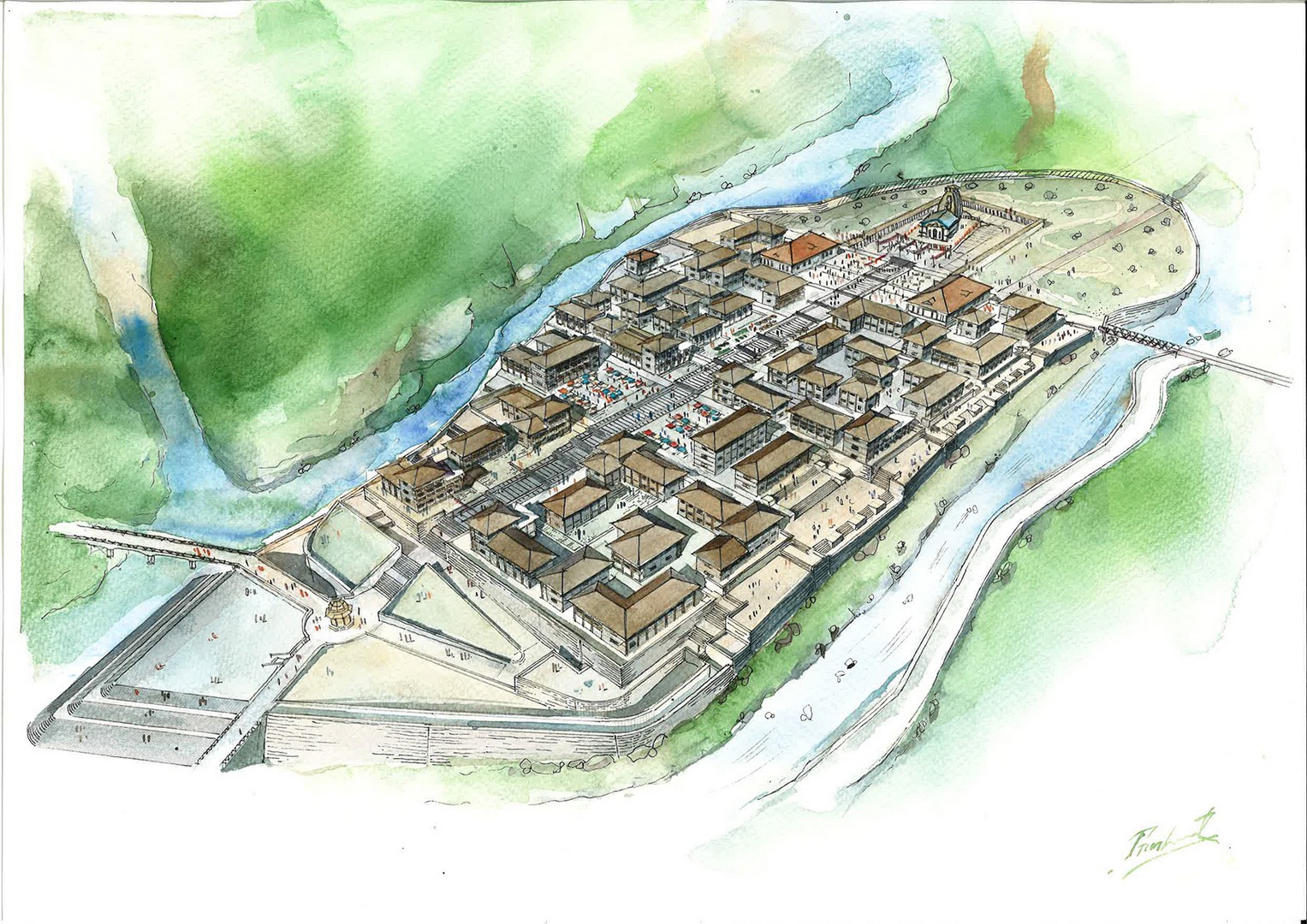
Post Disaster Revival Plan - A Universal Blueprint for Sustaining Mountain Towns
When Kedarpuri town, 3553 m high in the Himalayas, was ravaged in 2013 by the flooding Mandakini and Saraswati rivers flanking it, the unfolding disaster caused massive devastation of life, property and the local environment. This ecologically sensitive area witnessed perilous imbalances after being consistently plagued by misguided development and unchecked construction in past years driven by a burgeoning tourism economy owing to its exceptional religious significance for Hindu pilgrims. The Shiva temple of Kedarnath dates back to the 8th CCE, was legendarily built by the Pandavas, revived by Adi Sankaracharya, and is also one of the 12 Jyotirlingas and a Char Dham Yatra venue.
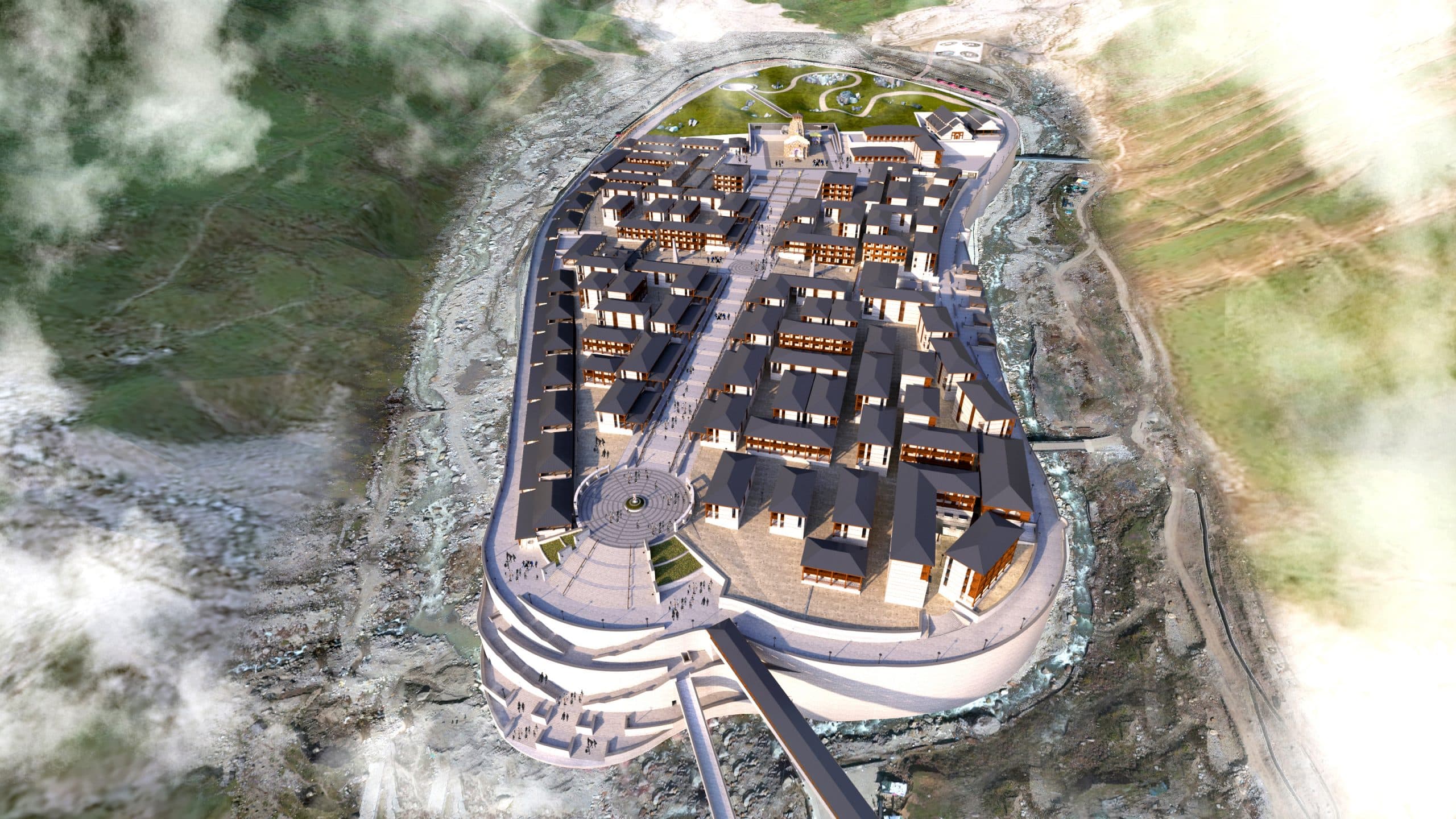
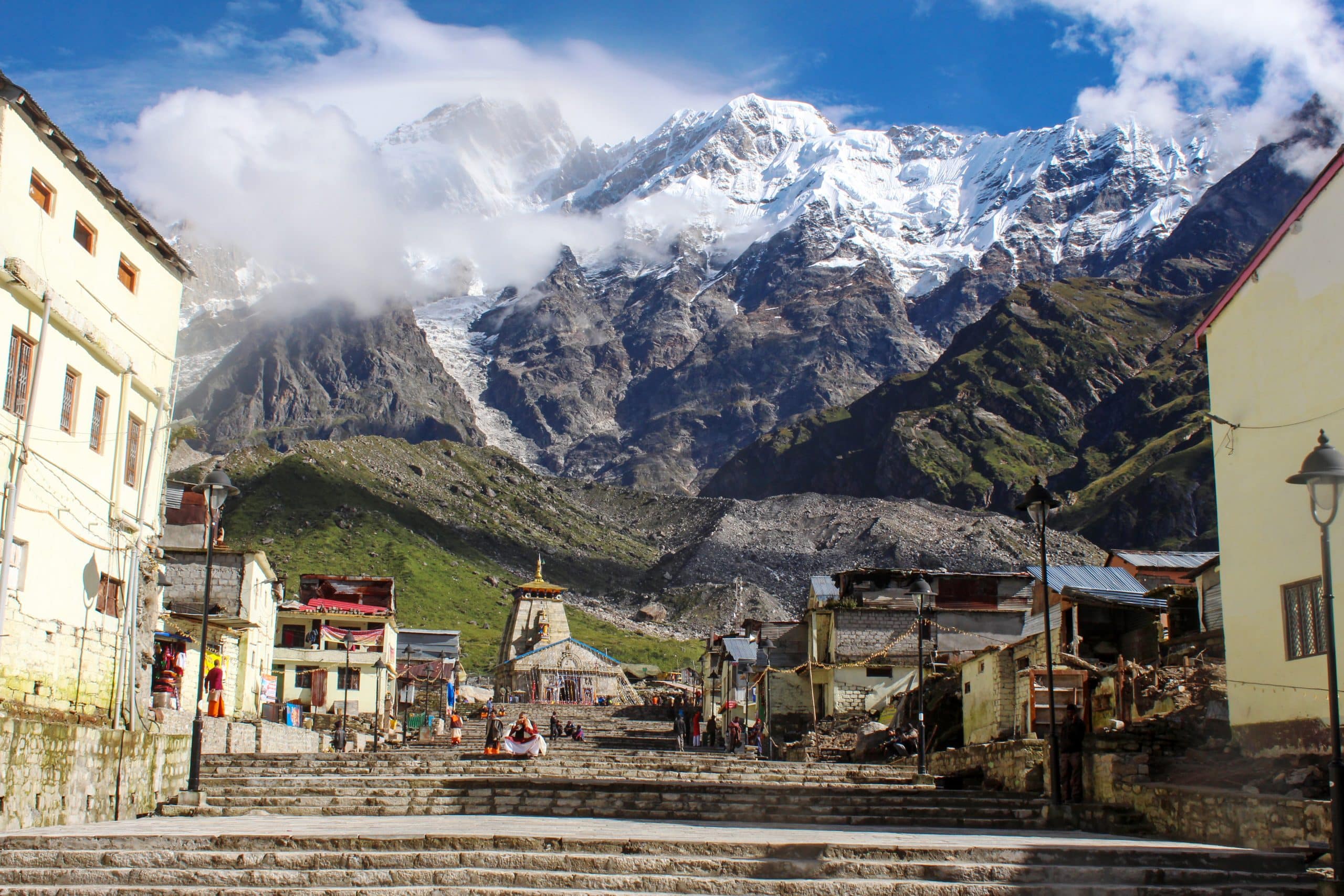
This primacy warranted an immediate post disaster revival, prompting the Uttarakhand state government to commission a redevelopment plan supported by the CSR initiatives of some corporate entities including the JSW group. The implemented detailed design conceived by INI Design Studio integrated the town’s revival with its continued sustenance and resilience against all foreseeable future harm. The team undertook exhaustive studies of local geographic, climatic, economic, socio- cultural and infrastructural conditions and derived consultative inputs from various invested institutions for the project. INI’s cohesive plan aimed for a sustainable, sensitive revival of the temple town’s physical, economic and ecological environment involving a de-densification of the island surrounded by Manadakini and Saraswati Rivers and Himalayan Mountain Ranges. The plan offers an adaptable framework which can universally be applied to develop other mountain towns in India.
Comprehensive Plan Preserves Religious, Aesthetic and Ecological Sanctity
The design for Kedarnath revolves around declaring the immediate areas around the temple as ‘forever open, clear and free’; and defining the approach along a central axis leading from an arrival plaza for tourists at the base up to the Temple at the top. Spanning the width of the approach, steps paved with stones cut from boulders washed down by the flood are laid along the terrain’s natural gradient. This approach is designed for pilgrims to progress in a comfortable file to the temple in a span of maximum 20 minutes, while being enthralled by a clear view of the shrine against a splendid background of perennially snowcapped peaks.
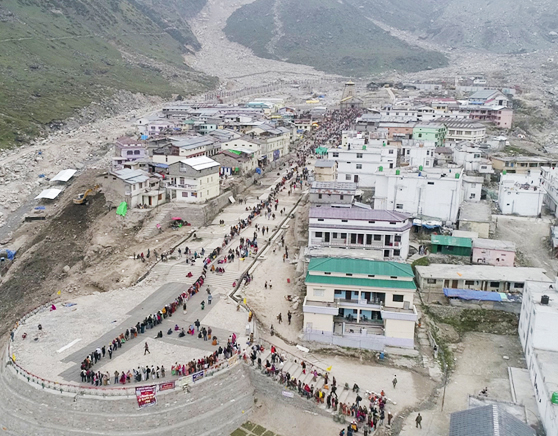
The entire stretch from the Temple to the arrival plaza with homes and shops in buildings on both sides is declared a non-vehicular zone. The surrounding residential settlement will be rebuilt as clusters on raised plinths to guard against floods around courtyards for ventilation and social interaction. Mid-way along either side of the central approach, open spaces bordered by shaded colonnades accommodate shops catering to locals and pilgrims. Thus, different categories of open spaces punctuate the built space and encourage social cohesion.
Geomorphological Alignments & Indigenous Building Technology
All the service lines and waste disposal system then loop around the clusters and the settlement in alignment with the natural terrain, augmented by technological systems for efficiency. Ghats were built along the Mandakini River behind the temple prevent erosion and subsequent flooding of its banks, and also host a landscaped Samadhi and ‘smriti van’ – memorial for lives lost during the flood. A vernacular architectural style has been adopted for all buildings using local construction materials, technology and craftsmen. Separate pedestrian routes for pilgrims and locals are clearly marked to enable uncrowded movement. These spaces are designed to be barrier free and wheelchair navigable, and are supported by Battery Operated Vehicles for emergencies, relegating vehicular movement only to the periphery of the settlement.
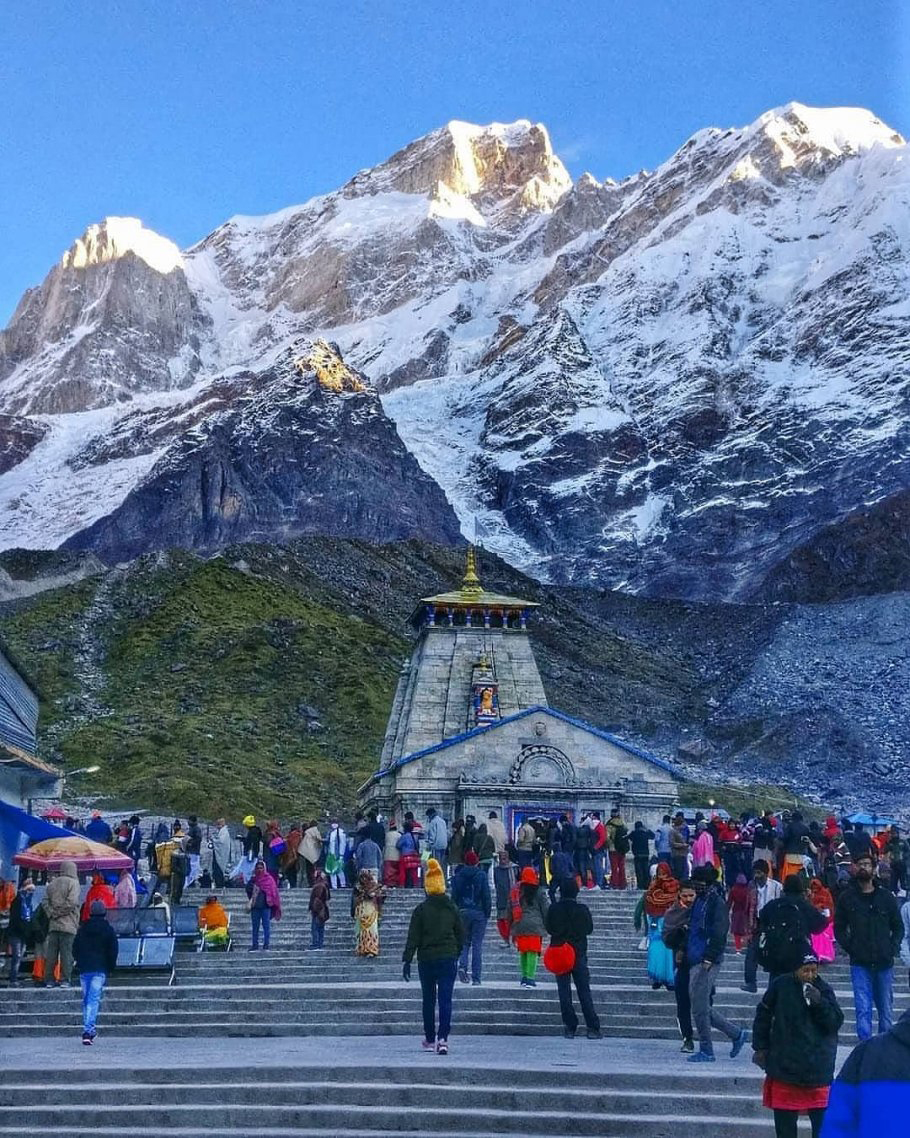
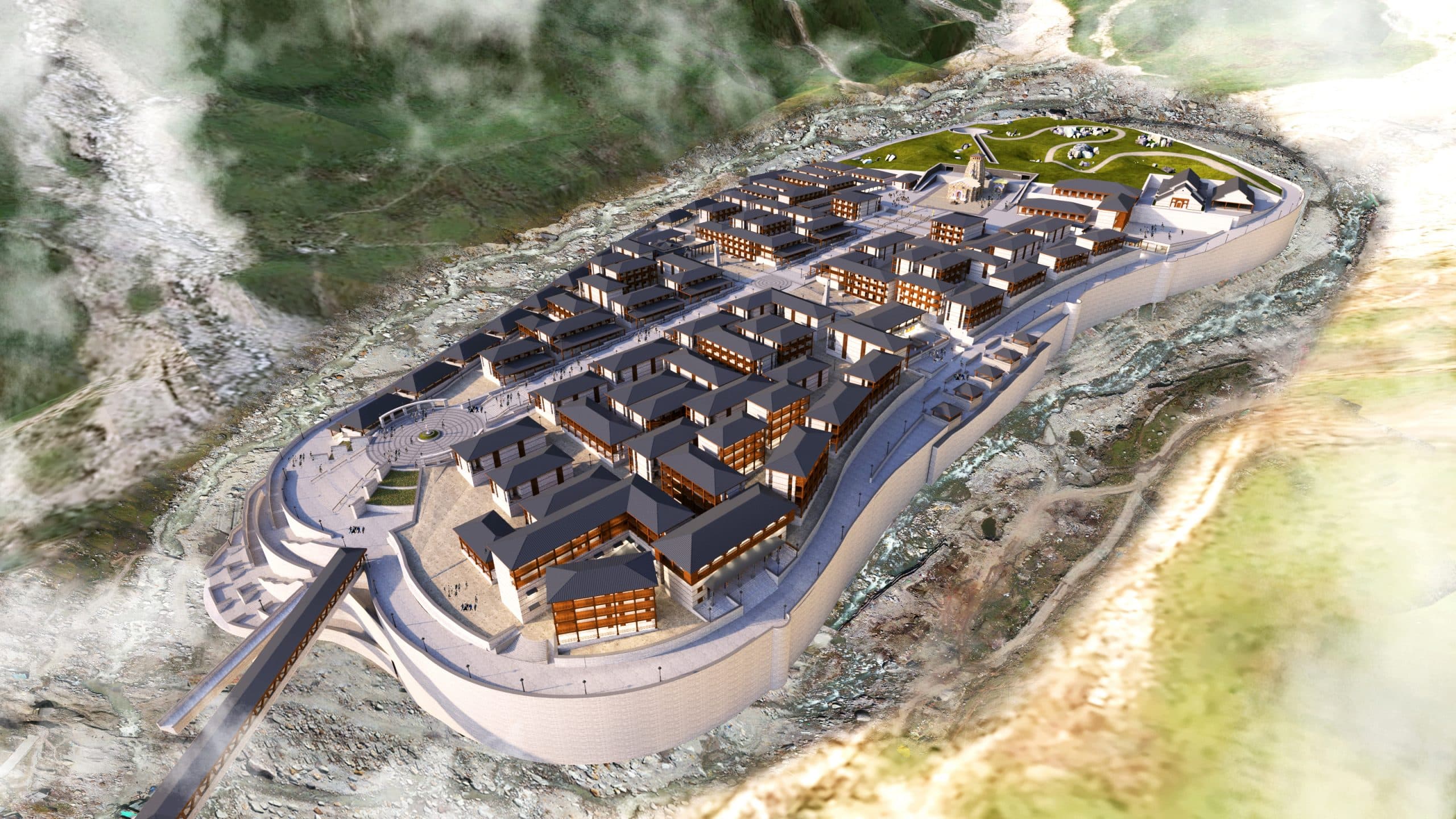
First IGBC Platinum Rated Hill-Town Development Plan
This ecologically sensitive and programmatically cohesive design to redevelop Kedarnath earns the distinction of being the first hill-town development plan to receive a Platinum IGBC rating. It is augmented by a risk mitigation plan which covers the range from building retaining walls/ embankments around the town to appointment and training of community marshals to manage such events.
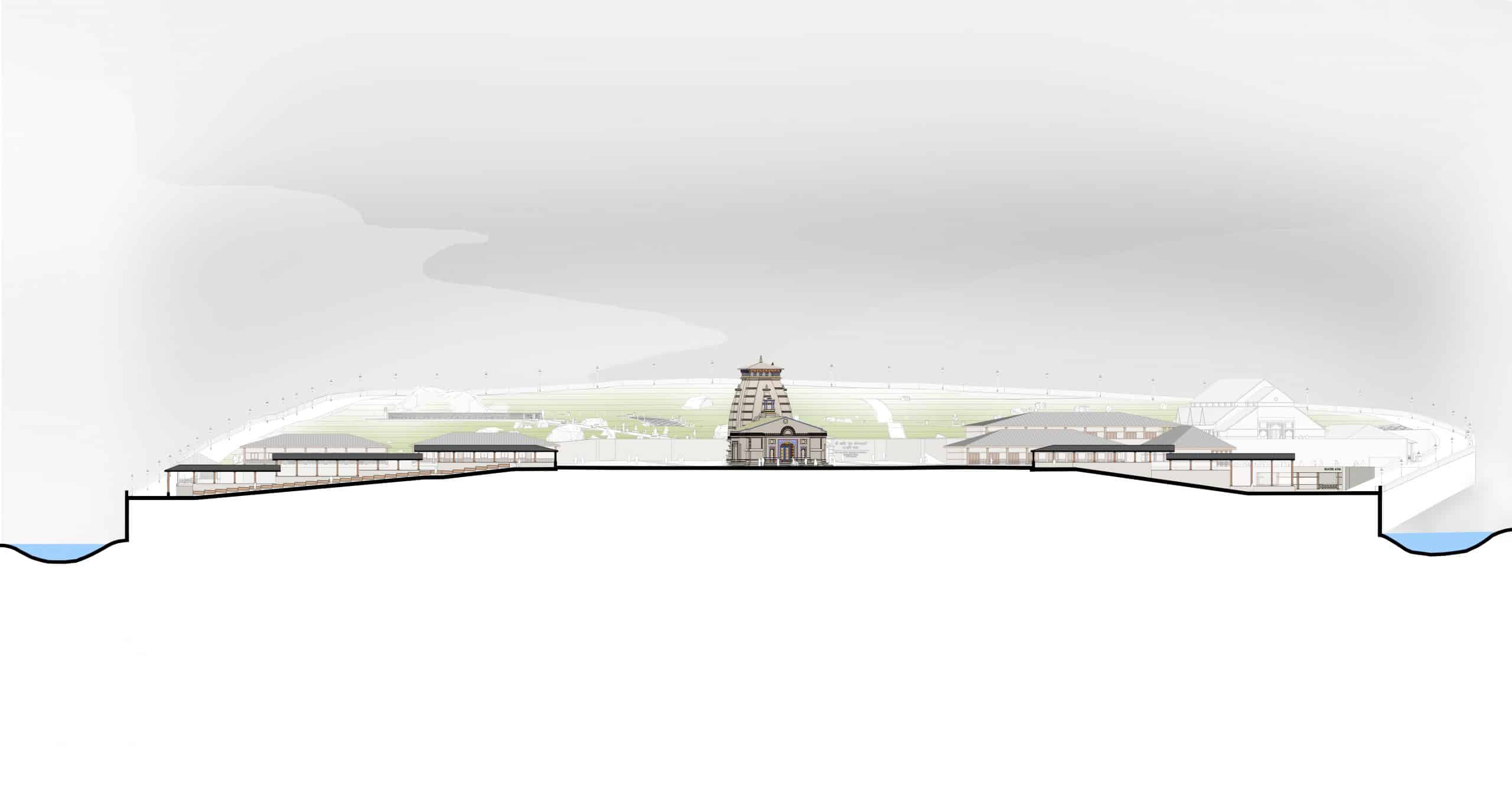
Temple Plaza
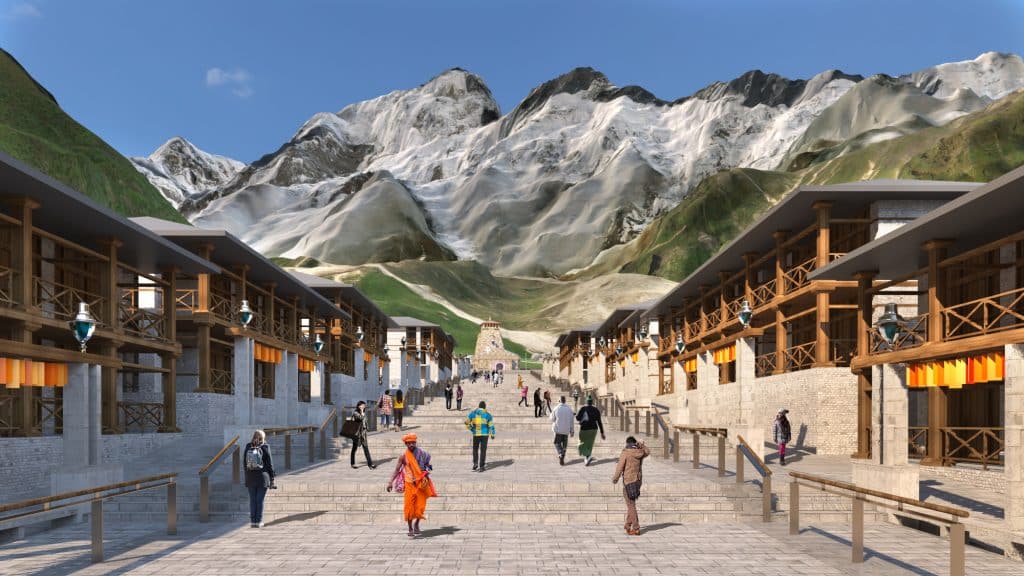
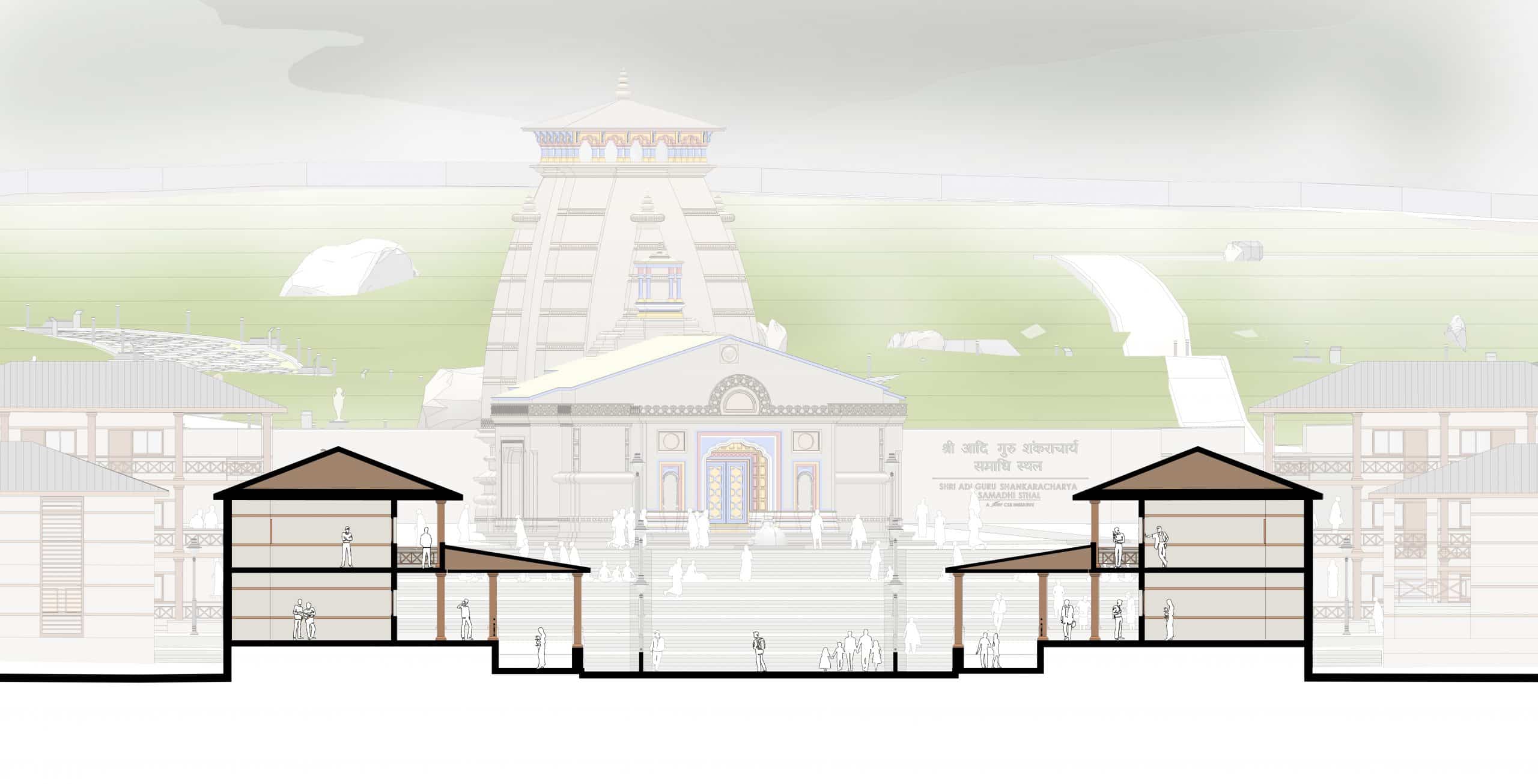
Central Street

Mandakini & Saraswati Plaza
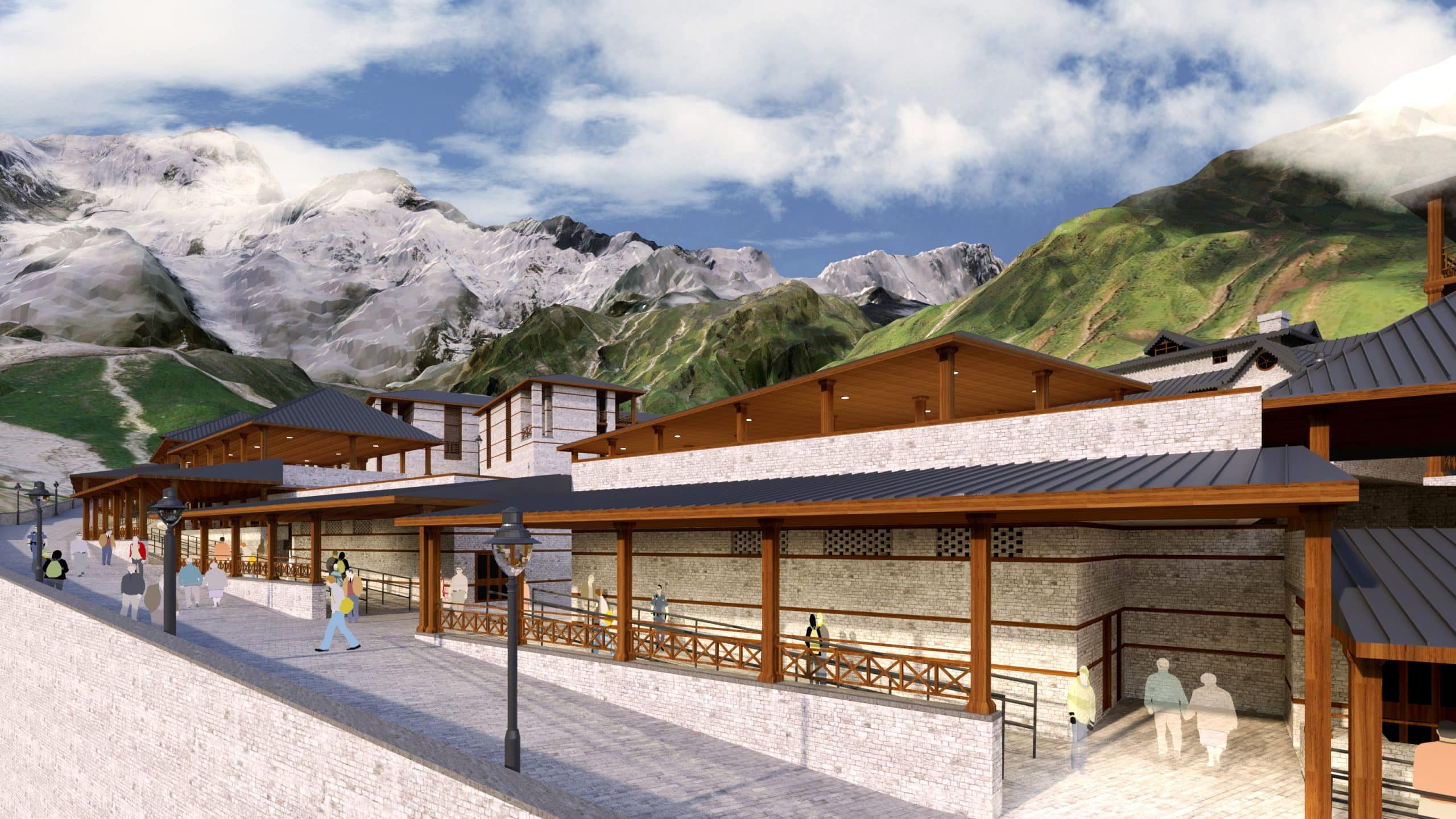
FATFC
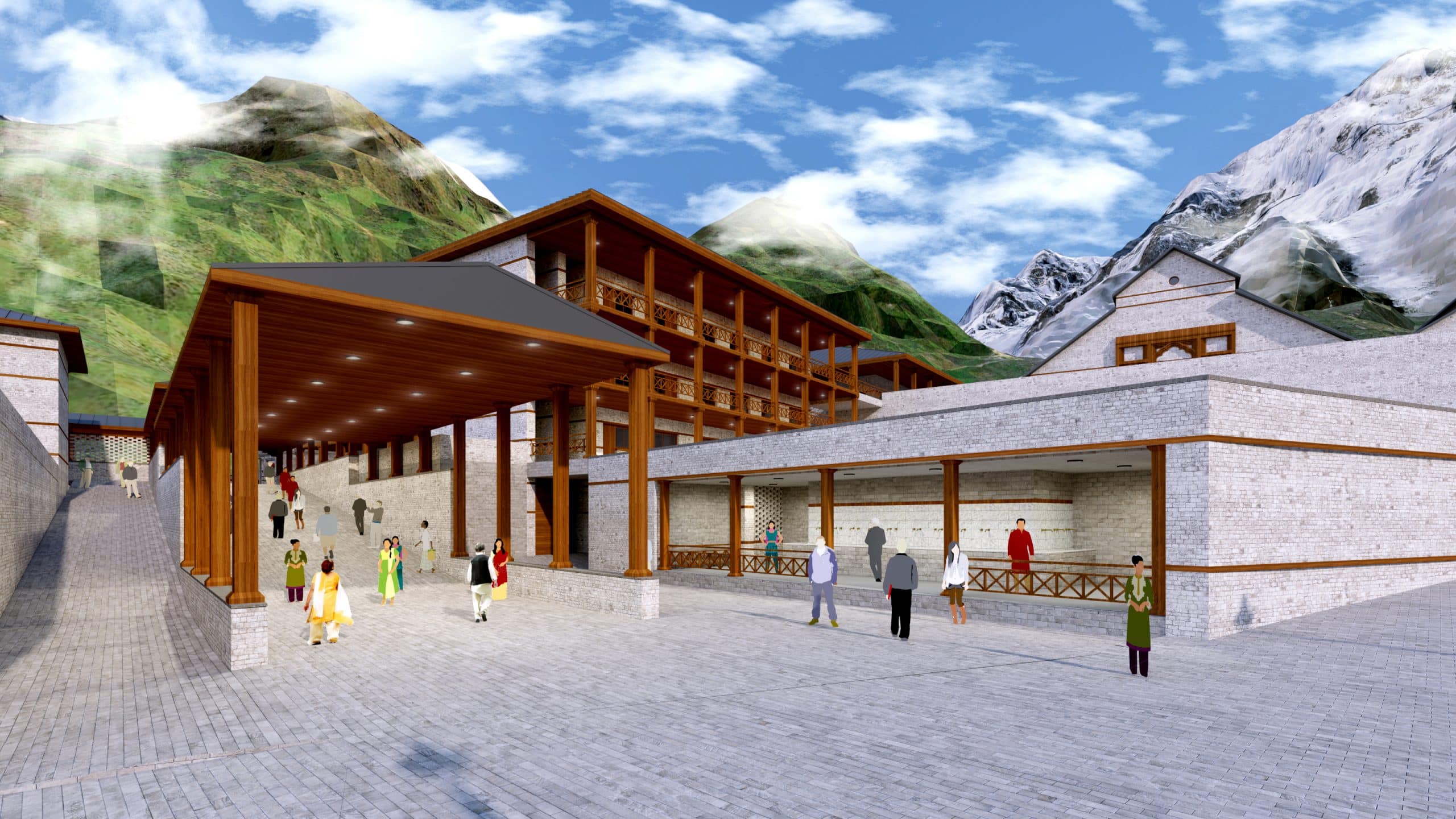
Water ATM
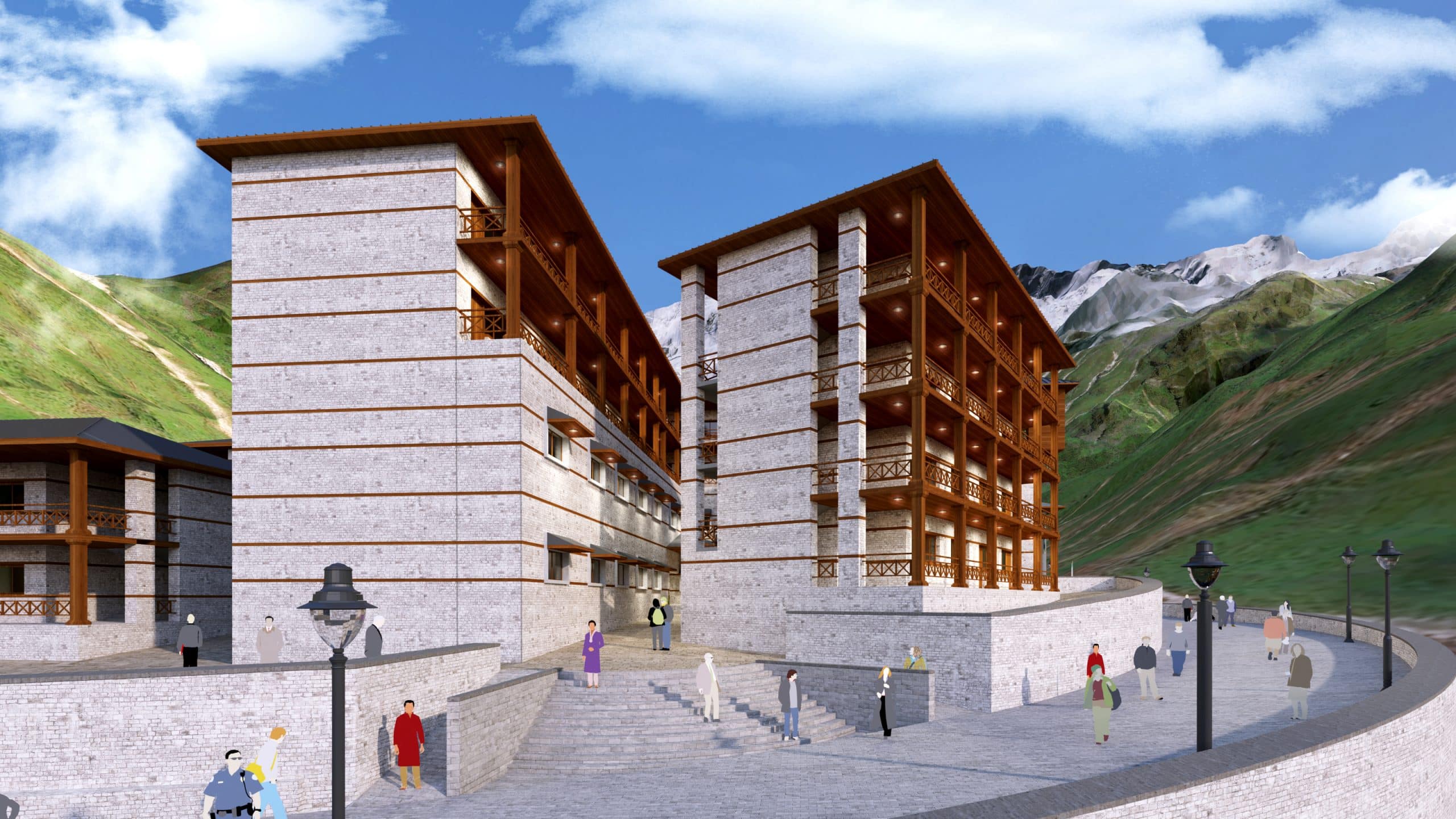
Hospital and Guest
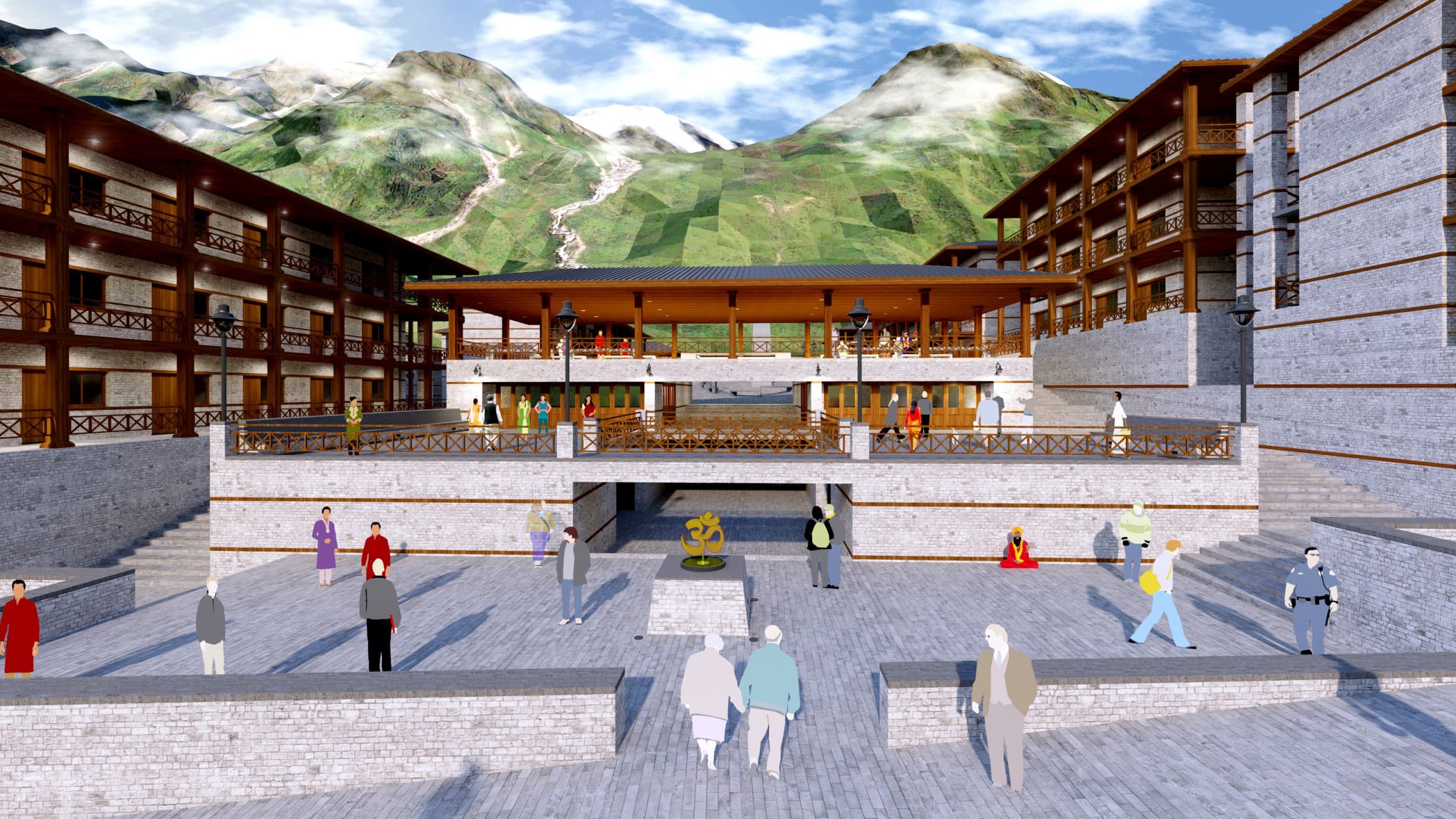
Saraswati Civic Amenity
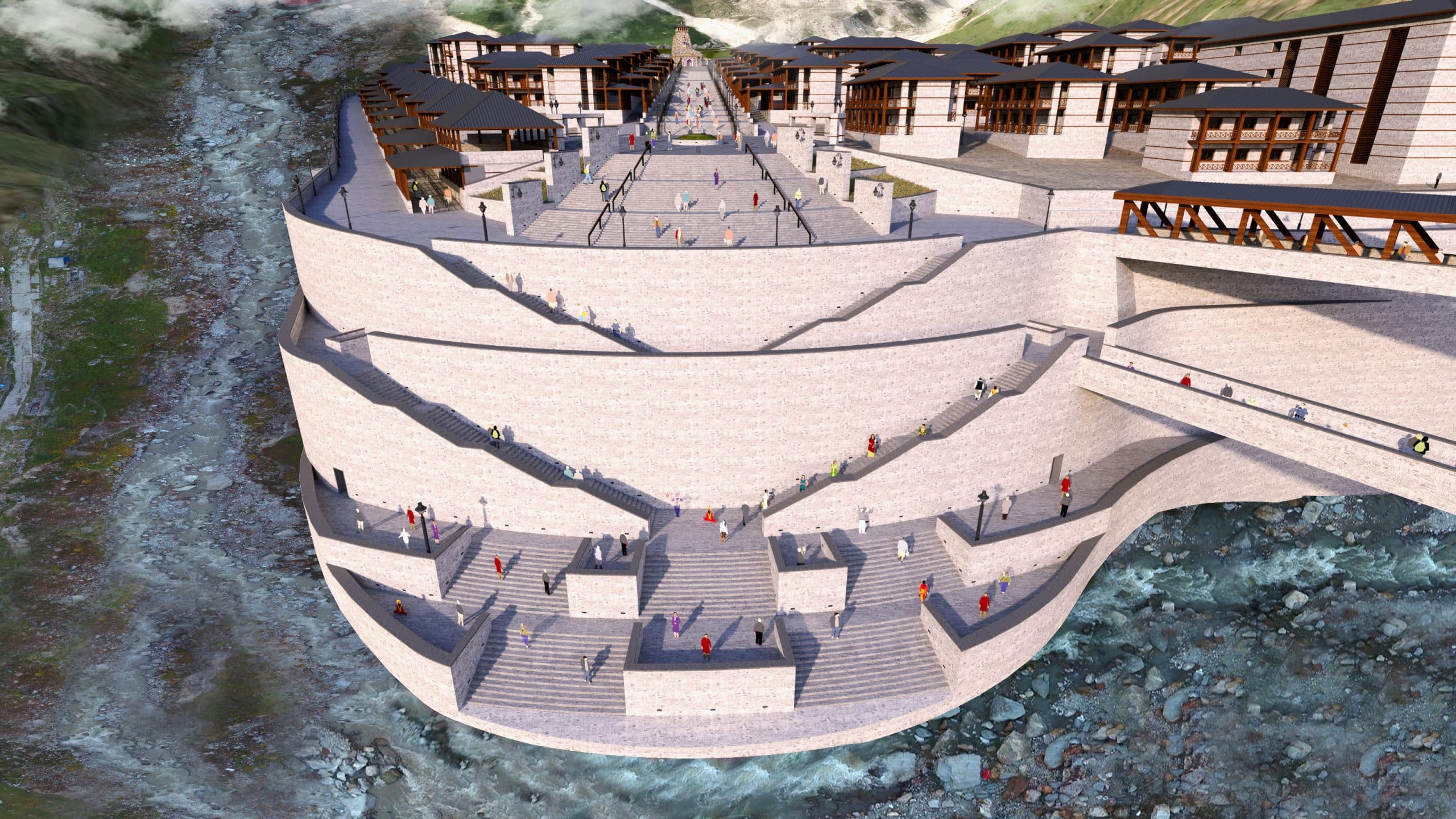
Sangam Gat
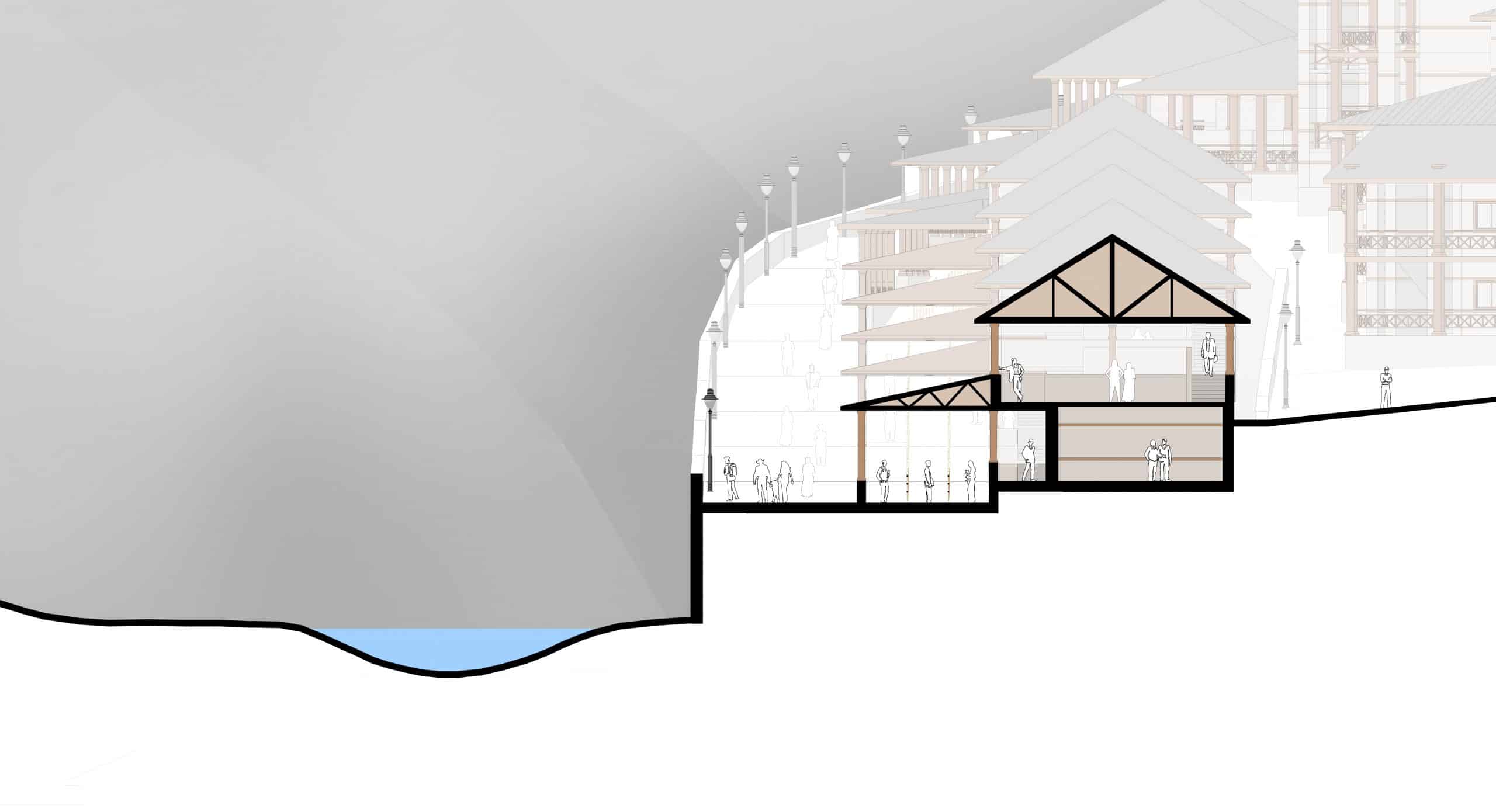
Mandakini Edge Condition
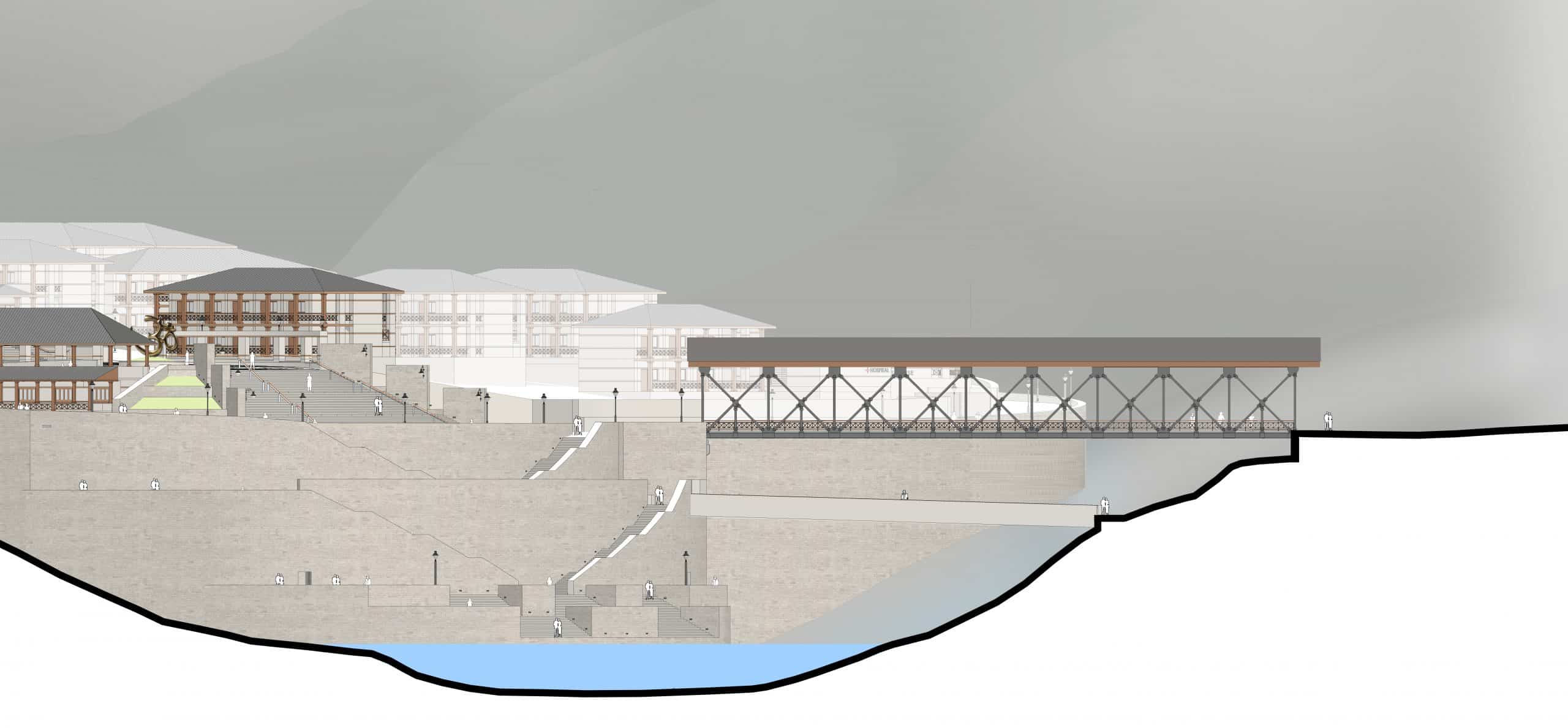
Bridge

Saraswati Edge

Mandakini Edge
"A Blueprint for Heritage Preservation through Natural Sustenance"

